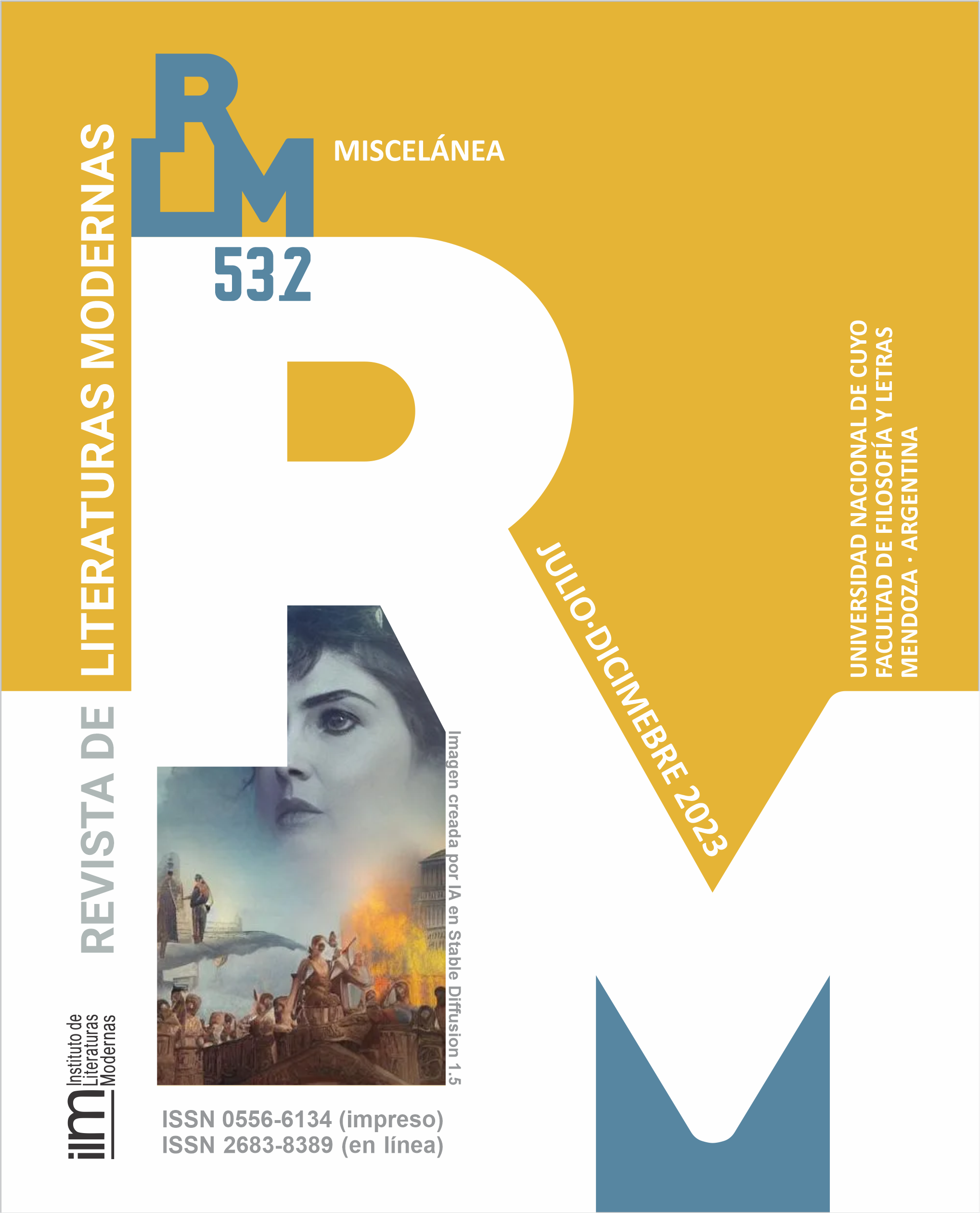Martina Chapanay: leyenda y novela de una gaucha montonera y salteadora
Palabras clave:
Montoneras, San Juan, Huarpe, Travesía, BandidismoResumen
De origen huarpe y nacida en San Juan, Martina Chapanay fue una salteadora y una miembro de las montoneras de Facundo Quiroga y del Chacho Peñaloza. En el siglo XIX, Pedro Desiderio Quiroga y Pedro Echagüe contaron su historia. El trabajo propone la confrontación de dos textos poco estudiados, cuyos sentidos, personajes y escenarios se relacionan con los relatos sobre gauchos matreros, el Facundo y El Chacho de Sarmiento, las guerras civiles y la etapa de Organización Nacional posterior a Pavón. “Martina Chapanay. Leyenda histórica americana” fue publicada en el Correo del Domingo en 1865. El relato de Quiroga recorre la vida militar y criminal de la protagonista de un modo en que los montoneros y los bandoleros terminan siendo equiparados. Luego de la muerte de Peñaloza, Martina se transforma en la legendaria baqueana y rastreadora que auxilia al viajero. En la novela La Chapanay, publicada en 1884, Echagüe la desfederaliza y la presenta como una salteadora arrepentida que buscará redimirse convirtiéndose en el “Quijote de las travesías cuyanas”. En ambas versiones, la apariencia y el comportamiento viriles de Martina configuran una rebeldía contra el mandato de género que acompaña su espíritu matrero y trasciende los conflictos políticos y legales.
Descargas
Citas
Amante, A. (2013). La trama. Sobre El Chacho de Sarmiento en Las Ranas, núm. 8, 137-149.
Auerbach, E. (1996). Mimesis. La representación de la realidad en la literatura occidental. Fondo de Cultura Económica.
Baudrillard, J. (1978). Cultura y simulacro. Kairós.
Chumbita, H. (2013). Jinetes rebeldes. Historia del bandolerismo social en la Argentina. Colihue.
Cutolo, V. (1978). Nuevo diccionario biográfico argentino (1750-1930), t. V. Elche.
De la Fuente, A. (2000). Children of Facundo. Caudillo and Gaucho Insurgency during the Argentine State-Formation
Process (La Rioja, 1853-1870). Duke University Press.
Echagüe, P. (1945). La Chapanay, en Pedro Echagüe, Dos novelas regionales. Jackson.
Estrada, M. (1962). Martina Chapanay. Realidad y mito. Imprenta Varese.
Gutiérrez, E. (2001). Juan Moreira. AGEA.
Hobsbawm, E. (2001). Bandidos. Crítica.
Quiroga, P. D. (1865). Martina Chapanay. Leyenda histórica americana. Correo del Domingo, vol. 3 (65 y 66).
Quiroga, P. D. (1871). Martina Chapanay. Leyenda histórica americana. Monitor de la Campaña (8, 9, 10 y 11).
Rodríguez Pérsico, A. (1993). Un huracán llamado progreso. Utopía y autobiografía en Sarmiento y Alberdi. Interamer-OEA.
Rojas, R. (1957). Historia de la literatura argentina. Ensayo filosófico sobre la evolución de la cultura en el Plata, vol. 6 (Los proscriptos II). Guillermo Kraft Limitada.
Sarmiento, D. F. (1973). El Chacho. Último caudillo de la montonera de los Llanos, en Pedro Orgambide (pról. y ed.), José Hernández, Domingo F. Sarmiento. Vidas del Chacho. Rodolfo Alonso.
Sarmiento, D. F. (2000). Facundo o civilización y barbarie en las pampas argentinas. Prólogo de Daniel Alcoba. Buenos Aires: Planeta DeAgostini.
Zumthor, P. (1994). La medida del mundo. La representación del espacio en la Edad Media. Cátedra.
Descargas
Publicado
Cómo citar
Número
Sección
Licencia
Derechos de autor 2023 Emiliano Sued

Esta obra está bajo una licencia internacional Creative Commons Atribución-NoComercial-CompartirIgual 4.0.























